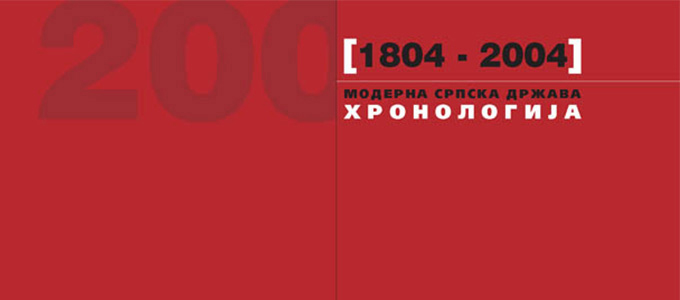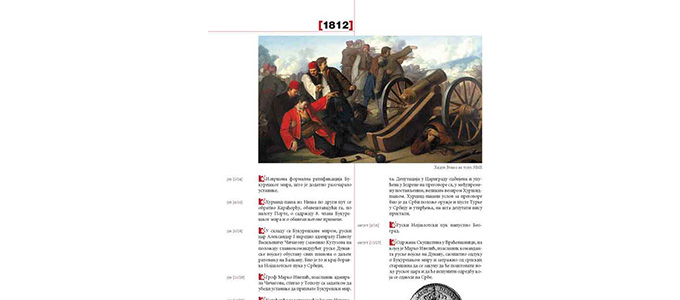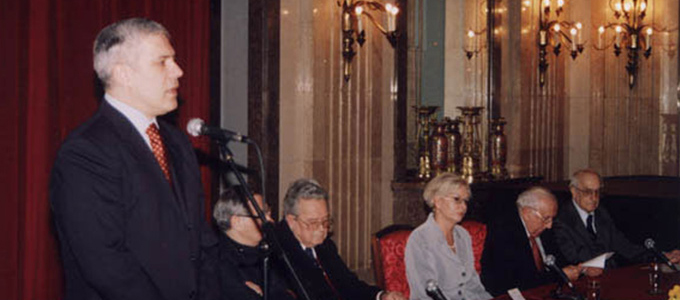In charge of the project: on behalf of the Government of the Republic of Serbia – the Office of the Committee for marking 200th anniversary of the First Serbian Uprising and the Historical Archives of Belgrade
Editor-in-chief: Branka Prpa, PhD
Authors-editors: Prof. Ljubodrag Dimić, PhD, Prof. Ljubinka Trgovčević-Mitrović, PhD, Prof. Milan Ristović, PhD, Assistant professor Miroslav Jovanović, PhD
Assistant professor: Dubravka Stojanović, PhD, Predrag Marković, PhD, Branka Prpa, PhD, Miroslav Perišić, PhD
Graphic design: Dragana Lacmanović
Opening speech: the President of the Republic of Serbia, Boris Tadić
Volume promoters: academician Nikola Hajdin, president of the Serbian Academy of Arts and Sciences, academician Predrag Palavestra, academician Sima Ćirković and professor Ješa Denegri, PhD
The promotion was held on 15 March 2005 at the festive hall of the Assembly of the City of Belgrade. The book was promoted at the Archives of Vojvodina in Novi Sad on 23 June 2005, as well as at the National Museum in Šabac on 9 September 2005.
The book was compiled on the occasion of 200th anniversary of the First Serbian Uprising.
This is a pioneering enterprise of a large group of authors and members of the Editorial Board,page 33 the first book of its kind in the Serbian history as it comprises "total history" of all its parts – the eventsfrom thepolitical history are given equal treatment to the one given the events from culture, economy, science, transportation, medicine, sport, literature.
The chronology shows unbreakable ties of what constitutes everyday life of the people living in the past, everyday life composed of key events on the "great" political stage, and the "small" ones influencing the life of the common man. And it is there that the methodological innovation of this book lies – it is in it that all the aspects of history are presented, side by side, as they took place in time.
The work on this project got together 35 experts who, each in his or her area, made it possible for the last two centuries of the Serbian history to be shown as a whole. For the purpose of having an easier monitoring the content was divided into four thematic areas (politics, culture, society, economy) visibly marked with graphic signs enabling a selective reading of the book and follow certain courses of history. The texts have been enriched by illustrative contributions which, themselves, are the documents of the time.







